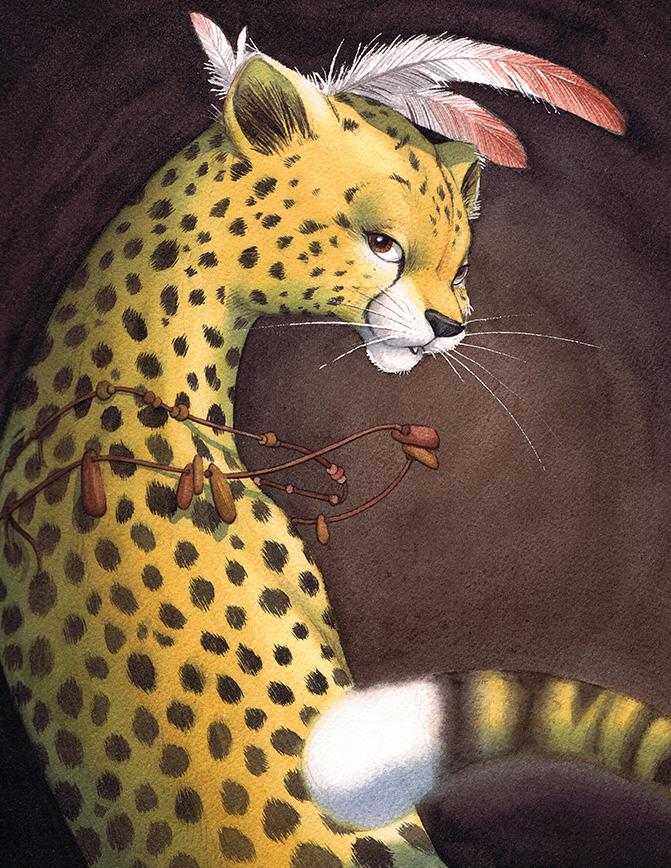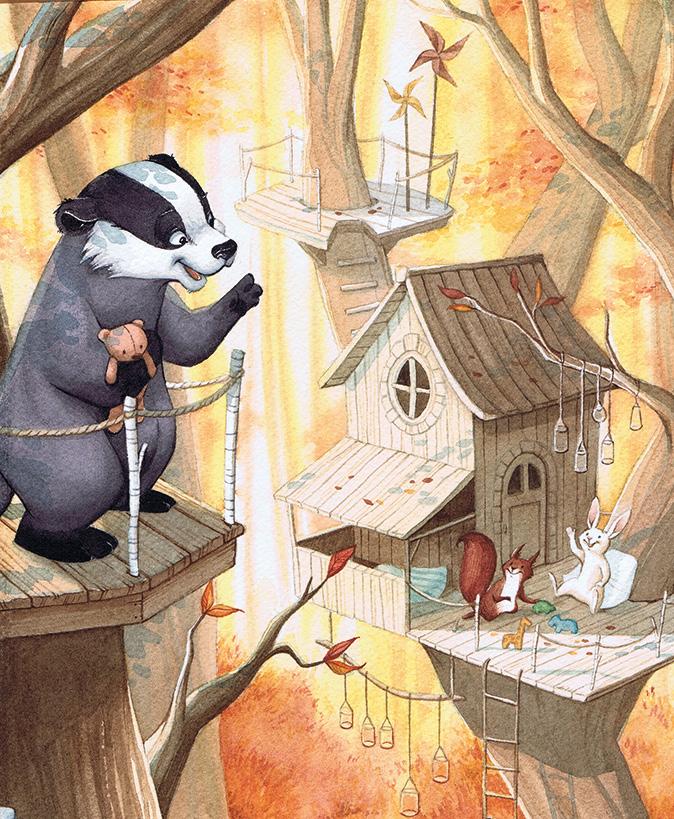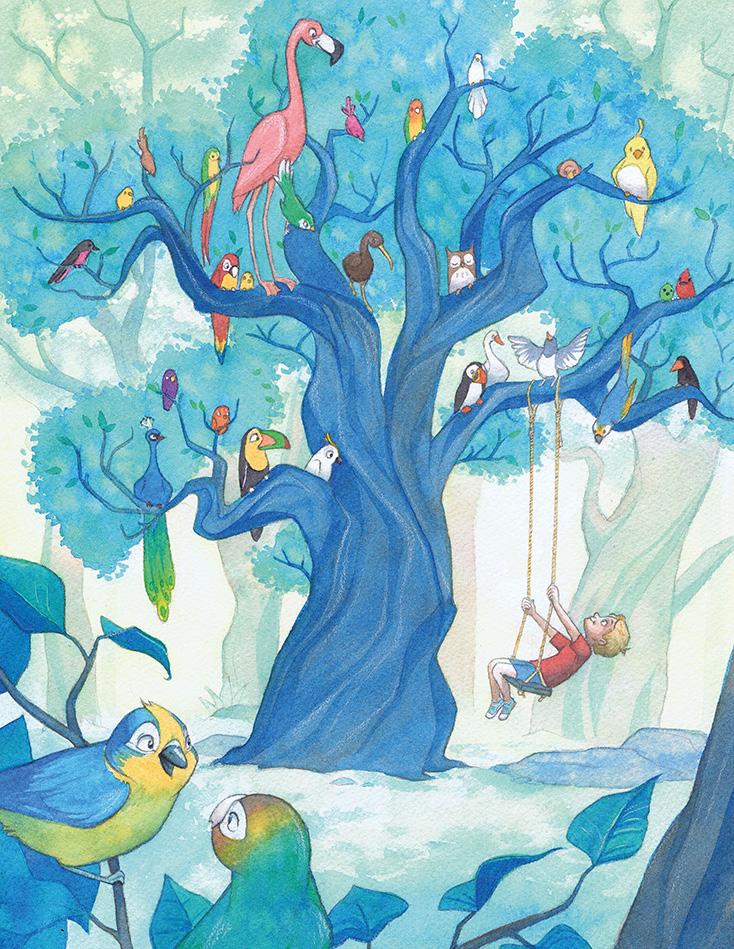
7 minute read
Julie Mellan
Interview with Lon Levin
When did you first think about art as something you anted to do? Were you encouraged or discouraged by family, friends, teachers, mentors?
Advertisement
I always loved drawing, since I could hold a pen. As a child, I used to draw and paint all day long, and I simply never stopped. When I was 5, I told my mother that drawing for children books must be a pretty cool job… Luckily, my parents told to my brothers and I that we could do whatever the jobs we wanted as long as we did it well, and with passion. Yes, I felt encouraged by friends and family despite I knew that working as a freelance won’t be a bed of roses everyday.
What kind of kid ere you? Where did you gro up? What ere your influences?
parents, my two brothers and I lived in a suburban area with our Labrador in the late 90’s. I was surrounded by friends of my age in this lovely neighborhood and (when I wasn’t reading), we spent entire days playing in each other’s backgrounds or rooms… We also watched a lot of Disney’ s movies. I definitely was inspired by these in the first place. After the high school, I entered an art school, in order to learn the animation. There, we studied academic drawing, painting, illustration and animation. But when I had to choose my path, I rather preferred illustration: its delightful for me to spend several hours painting a detailed scene, but a real pain when it’s for hundreds of animation’s keys gestures.
Your style and take on creation of art is very unique. Did you ork on developing a style or is that hat naturally came out of you?


Has the computer affected your ork? Do you ork traditionally and digitally?
I still work traditionally, with watercolor. Some illustrators manage to do magnificent digital paintings but on my side, I’m so bad at it ! I simply can’t. That’s alright, because I love this traditional way, from the process to the final rendering. Sometimes, people tell me that they actually like this classic look, that it reminds them oldfashioned illustrations. Nothing makes me more proud
(Continued)
I think this is like an handwriting, it comes naturally, you can try to improve it, work on it, but it represents intrinsically who you are.
Several art teachers told me for years that my characters looked too much like Disney’s. I try to avoid that, to go beyond and add my touch, but this is what it comes naturally for me !
You do a lot of lovable arm character art ork. Ho did that happen?
Usually, I draw my characters based on a feeling, then comes what they will look like. I guess this process gives them more depth. Then, I’m inspired by nature: for example, have you noticed how cute a baby wombat is?
Will you explain a little about the origins of your characters and their meaning to you? Do they come out of your head or from people you’ve seen or know?
As I said, I start with an idea, a feeling, a posture. I’m often inspired by my two sons. Toddlers and kids have their own gestures and attitudes, their games or funny words. As an example, my son recently reached the minimal size to ride Space Mountain, I had to paint this smile ! There’s so much in it: pride, excitation and pure

than when I heard “it reminds me of Beatrix Potter’s art.” However, I do paint little colors thumbnails on Photoshop before I start the actual painting. It helps me to easily settle the color scale and harmony, the light sources, and the contrast of an illustration.
What’s going on in your head hen you work on a piece? Your fears, anticipation, confidence Ho do you know something is finished?


for years when I was a kid, and I still love the movies; but I heard so often that is was boring, that it gave a déjà-vu feeling, that I try to add my own personal touch every time. Also, my second fear is to be too classic, almost outdated. I work traditionally, I paint cute animals with watercolors. I’m pretty far from whacky, scatty and cool illustrations that are made these days. I do my best to go beyond my smooth, reserved nature.
Also, I must confess I’m never really confident when I start a new piece. I’ll discover the final rendering at the very end: sometimes it looks like what I had in mind, sometimes it doesn’t.
Finally, an illustration is finished, obviously, when everything is done. If this mouse needs whiskers, it’s finished when they have been drawn. But I really don’t know how to explain when the mouse needs whiskers or not. It’s like cooking: some people would add a little more salt, some wouldn’t!
What do you do to promote yourself and get ork? Have you worked for publishers(print and gaming)/animation companies in European countries like England or France or US ? If not would you want to?
In order to promote my work, I just post my latest illustrations on social medias and my online portfolio. And sometimes, between two paintings, when I have some time, I knock at publishers’ doors to let them know that I’m here… But in general, they rather come to me when a project is launched and they need an illustrator to work on it. I work with few publishers in France, from Netherlands and the US. My style of illustrations seems to be too classic, too formal for the French publishing… I would love to work with publishers from the UK! Fingers crossed!
What’s the future hold for you? Any ultimate goal?
Your work is so unique, ho did you attract clients when you first started out. Were you concerned about getting found by the right client?
Oh, when I started, freshly graduated at 23 years-old, I was concerned by getting found, merely! Working in illustration: welcome to the jungle! I have launched dozens of portfolios to French publishers, with more or less success in the first months. In the beginning of my career, I did a lot of birth announcement cards and wedding invites, for living. Happily, I found editorial projects pretty quickly, and I keep working with my first publisher since then. Few years ago, I also started to post my work on social medias, it gave me some global visibility, and I am now represented by an international illustration agency who brings me some projects and support me with the contracts.
I’m curious about ho you choose hat to ork on. What’s does your process entail? Start to finish. Can you give us a short step-by-step?
It was hard at the beginning, but today, I can afford to choose on which projects I want to work. Usually, I receive the text in the first place, if I like it, if it inspires me, let’s go for it! I start with tiny (and pretty ugly) thumbnails, I settle the storyboard this way, so I can have an overlook of the book and its sequence. I try to diversify the compositions in the several pages. When it looks good for me, I do the sketches in the right size, then I send to the publishers to get his green light, and continue on the paintings.
I wish I could live from illustration for many years. Let’s go for even more books! And pretty good ones. Actually, I’m really often frustrated by the timelines. As I work traditionally, I need time to complete a book project while publishers schedule the publication just few months later. My ultimate goal would be to have the opportunity to work on a beautiful illustrated book, full of clumsy, cute animals, and having enough time to enhance it as much as it’s necessary.
If you could meet anyone in the field you’re in who would it be and why?
Does it sound creepy if I say I would like to meet a bunch of dead people? Seriously, I’m a huge fan of classical illustrators like Breatrix Potter (obvisouly, already said it), Arthur Rackham, Kay Nielsen, Grandville, Gustave Doré. I would like to know what their lives looked like at their time. All of them were real precursors in their field! But of course, there are also many great illustrators these days!
I had the chance to study with one of my favorite illustrator, Jean Claverie, who was a teacher in my art school. He is a master of watercolor, and he undoubtedly taught me to be really exacting with this demanding medium. Beyond the living, I admire Rebecca Dautremer, Christopher Denise, Geneviève Godbout, Quentin Gréban, Frédéric Pillot… and many others I forgot. To be honest, I think I would be too shy to ask them anything, if I could, I would just sit quietly, and watch them working.









